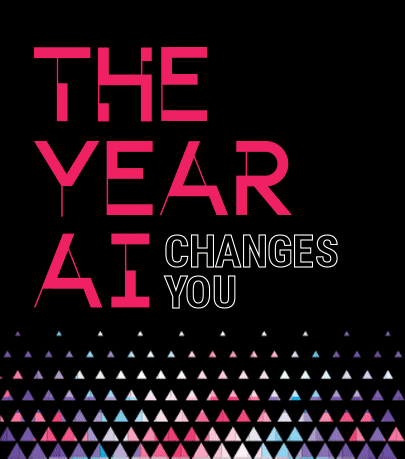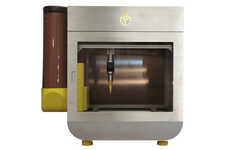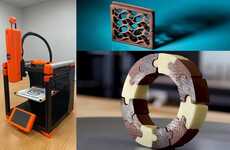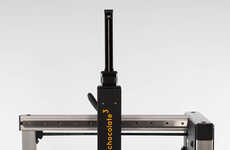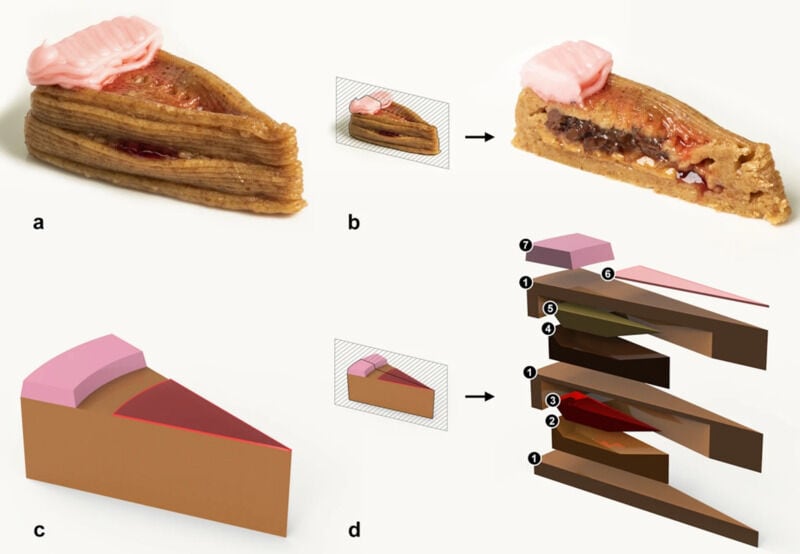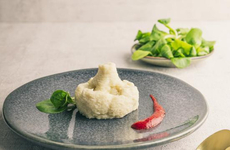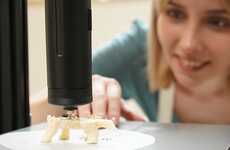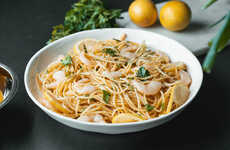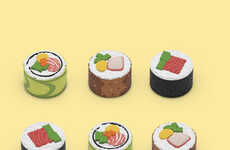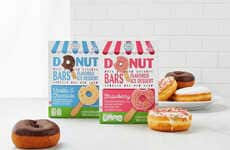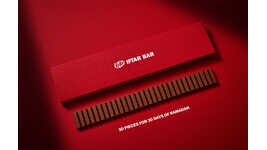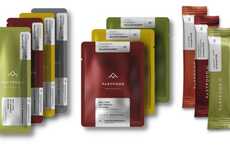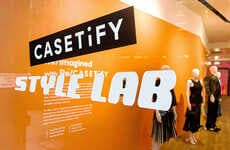
Researchers Created a Seven-Ingredient Cheesecake Slice with a 3D Printer
Laura McQuarrie — March 24, 2023 — Lifestyle
3D-printed food has the potential to provide a more sustainable and personalized approach to food production, and that future is fast-approaching thanks to innovations like 3D-printed cheesecake. Researchers at Columbia University recently were successful in their attempts to create a seven-ingredient slice of edible cheesecake using a 3D printer.
The peanut butter banana-flavored cheesecake with a cherry drizzle was made possible by converting the ingredients into paste-like substances, which were then printed layer by layer. According to the researchers, constructing the cheesecake was like building a home but with "floors, walls and ceilings being the foundation (graham cracker) and inner pools (Nutella and peanut butter) holding softer ingredients within (banana and jelly.)"
The future of 3D printing food is promising as it has the potential to revolutionize the way we prepare and consume meals.
The peanut butter banana-flavored cheesecake with a cherry drizzle was made possible by converting the ingredients into paste-like substances, which were then printed layer by layer. According to the researchers, constructing the cheesecake was like building a home but with "floors, walls and ceilings being the foundation (graham cracker) and inner pools (Nutella and peanut butter) holding softer ingredients within (banana and jelly.)"
The future of 3D printing food is promising as it has the potential to revolutionize the way we prepare and consume meals.
Trend Themes
1. 3d-printed Food - Innovations in 3D-printed food are opening up opportunities to create sustainable and personalized food production.
2. Ingredient Conversion Technology - The creation of paste-like substances from food ingredients for 3D printing allows for unique flavor and texture combinations.
3. Edible 3D Printing - Edible 3D printing offers a new way to create unique and customizable food items with precision and accuracy.
Industry Implications
1. Food Manufacturing - Food manufacturers can utilize 3D-printing technology to create new, customizable food products with unique flavors and textures.
2. Restaurant Industry - Restaurants can use 3D-printing technology to create personalized, innovative desserts and dishes for customers.
3. Bakery Industry - Bakeries can explore the use of 3D food printing to create customized cake decorations and pastry designs with intricate details.
4.6
Score
Popularity
Activity
Freshness
